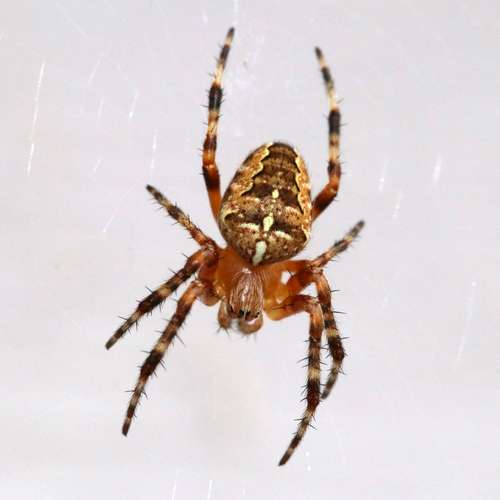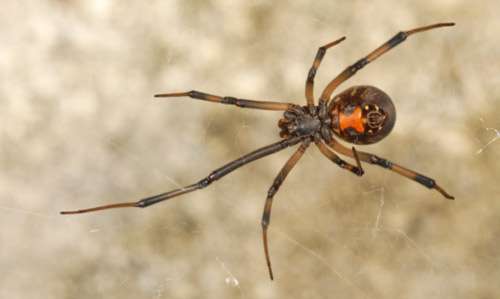
A type of spider that primarily feeds on woodlice is called the woodlouse spider (Dysdera crocata). Other common names are woodlouse hunter, pillbug hunter, sowbug killer and slater spider, which are all variations on the typical name of its victim.
Appearance
Adult females measure 11–15 mm (0.4–0.59 in) in length, whereas adult males measure 9–10 mm (0.35–0.39 in). They have 6 eyes, an orange to dark red tawny cephalothorax, legs, and lustrous (sometimes very shiny) pale beige to yellow-brown, occasionally dark grey, abdomen. They are notable for having unusually large chelicerae for a spider of this size. Although this species is not frequently seen close to human civilization.
Identification Feature
It is simple to recognize this spider. It has a big, pinkish-gray abdomen, reddish head, and shiny, smooth exterior.
Its distinguishing characteristic is its large jaws. Like the majority of spider species, females can grow to a length of between 1.1 and 1.5 centimeters.
What food do woodlouse spiders consume?
The woodlice, this spider’s sole prey, have hard shells that are engineered to be penetrated by its powerful teeth. Instead of creating webs, they hunt at night by looking for roving woodlice in warm, wet spots and catching them in their teeth. They hide out in designated hiding areas that are lined with silk during the day.

Why do woodlouse spiders reproduce?
Adults are combative with one another, which makes courtship a potentially fatal event. A silken sac is spun by the female after mating, and she protects her young from other spiders and centipedes while laying her eggs in it.
Importance in medicine
Crocata bites have been linked to an erythema that is 4 to 5 millimeters in diameter, localized, and extremely itchy. It appears that there is no cytotoxicity or systemic neurotoxicity brought on by the bites.
What habitat do woodlouse spiders inhabit?
Since its origins in the Mediterranean region, Dysdera crocata has spread around the world, from Eurasia to regions of South and North America, South Africa, New Zealand and Australia. Wherever woodlouse prey are plentiful, woodlouse spiders can be found throughout the UK. Favorite habitats include rotting wood, brick walls, and even cellars that are warm, moist, and have a lot of crevices.
As Pet
Although keeping these spiders in captivity is not a very common choice for a pet, it is possible. They are naturally timid and shy, but if they feel threatened they might bite, so it’s best to avoid handling them with bare hands. They can be fed tiny insects like millipedes, crickets, and woodlice. They flourish best in their native environment where there is an abundance of aged wood and woodlice.
Table





